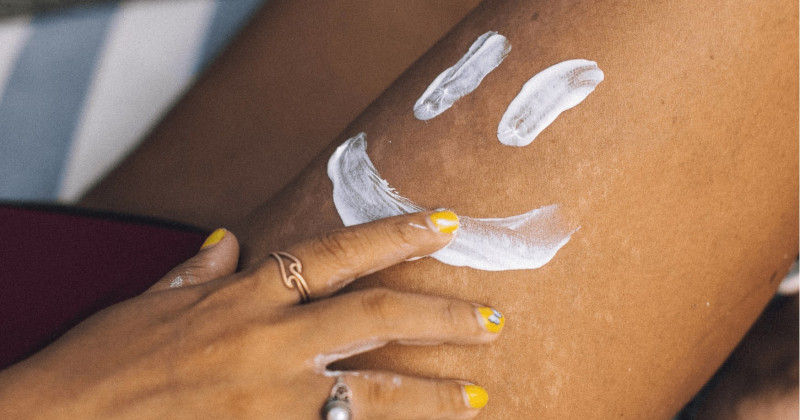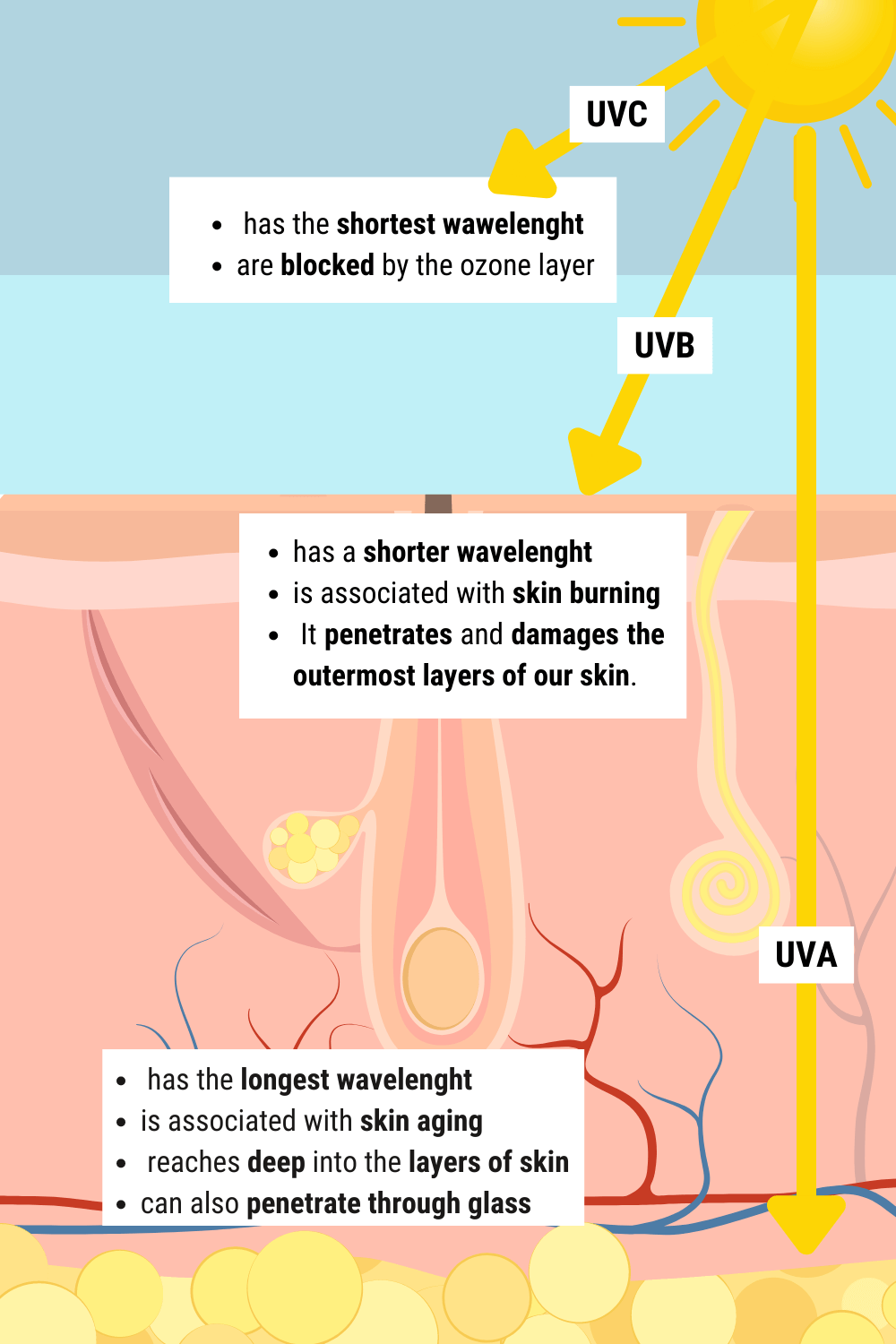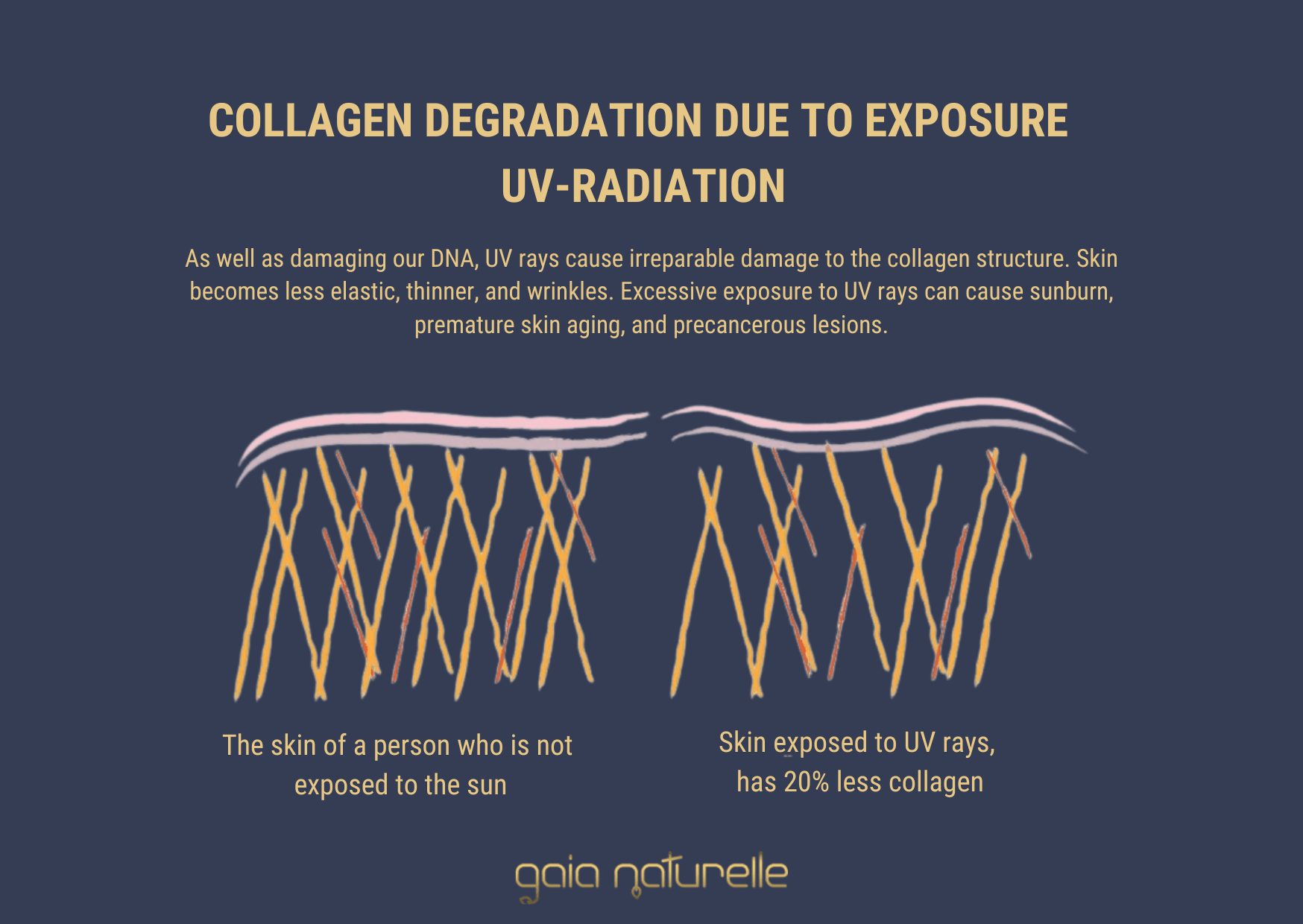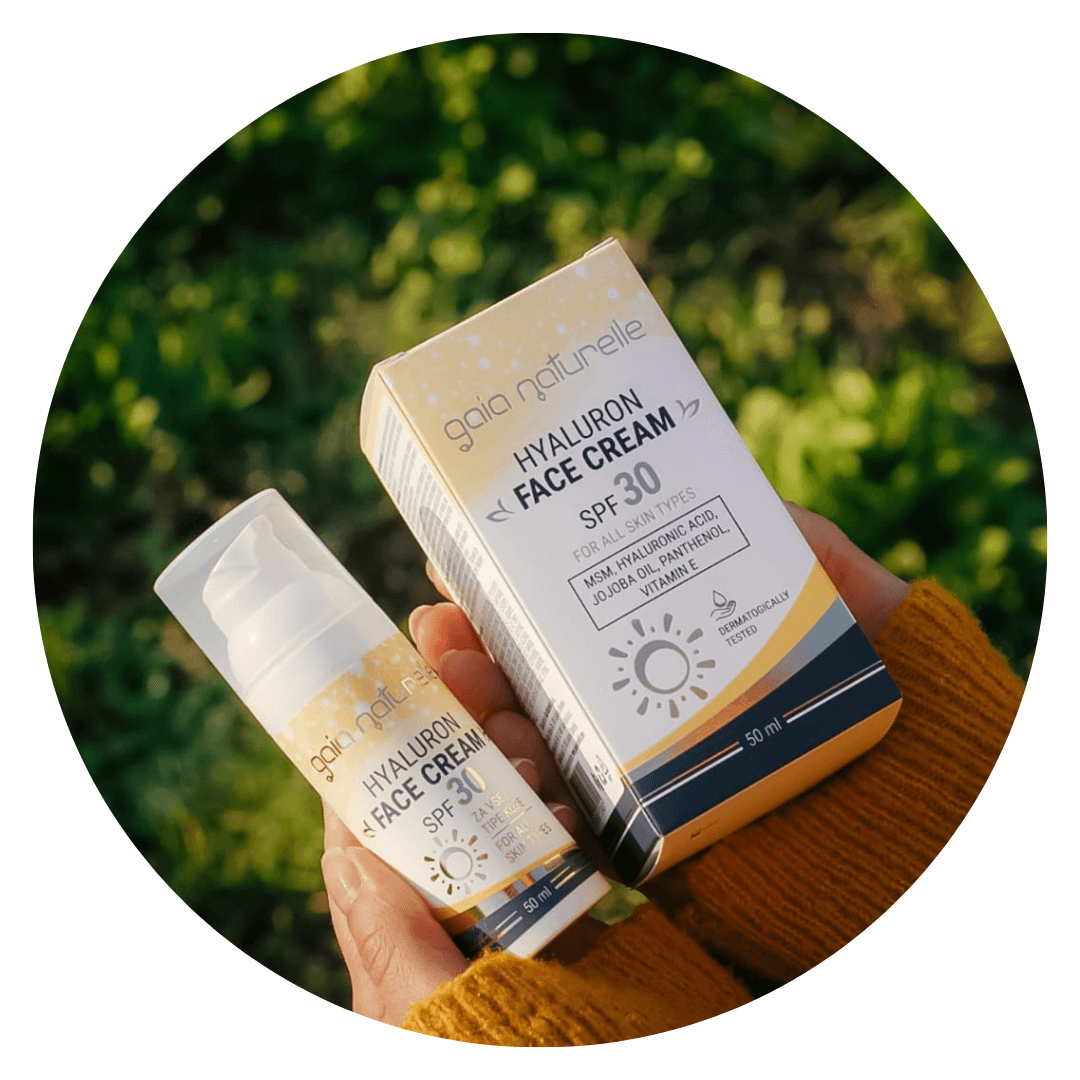The effect of UV radiation on skin aging

The most effective way to prevent photo-radiation is to avoid UV radiation. In any case, it is essential to apply the correct amount of sun cream every day, even in winter. UV radiation causes collagen in the skin to break down.
UV radiation is an essential factor in skin aging. UV aging occurs because collagen starts to break down in the skin after prolonged exposure to UV radiation.
However, all studies show that UV radiation is not significantly less than in summer due to the change of season. It is only the more cloudy days that make us feel that we have somehow escaped UV radiation.
Table of contents:
The biggest threat to collagen is UVA rays
Why does UV exposure break down collagen?
What happens to the collagen in the skin that has been overexposed to UV radiation?
So how do we prevent photo-aging?
What is UV radiation?
UV light is a part of electromagnetic waves. The spectrum of UV light is divided into 3 parts:
- UVA,
- UVB
- and UVC.
UVC rays with wavelengths between 100-280 nm are not yet a concern because they are trapped by the ozone. UVB rays with a wavelength of 280-315 nm are next. UVB rays are the ones that make the sun scorch us and make us red.
The sun protection factor of sunscreens, better known as SPF, measures the ability of a sunscreen to protect us from sunburn as the ratio between the dose of UVB radiation needed to burn us when we are protected and when we are not.
The last part of the spectrum is the UVA rays with a wavelength of 315-400nm, which are the ones we need to be most afraid of because they cause photo-aging.

The biggest threat to collagen is UVA rays
The problem with UVA rays is that the harmful effects are not immediately visible. UVA rays don't burn us red, but after a few years our skin will be saggier, duller, wrinkles deeper, and hyperpigmentation will appear. You are probably wondering now why skin would sag after exposure to UV rays.
The appearance of deep wrinkles and sagging skin is linked to the fact that UV exposure reduces the amount of collagen in the skin. And when there are no more collagen fibers in our skin, the skin no longer has any support and sags as a result.
Why does UV light exposure break down collagen?
Photo-aging is linked to the formation of increased amounts of oxygen-free radicals in the body. Our body defends itself against free radicals with substances called antioxidants. However, when there are too many radicals (when exposed to UV radiation) our antioxidants can no longer scavenge the excess radicals.

What is the radical problem? Radicals have a harmful effect on our hereditary records, proteins, and lipids. The presence of radicals in the body activates inflammatory factors, which are the main danger to our collagen!
Radicals can cause two events, they can activate enzymes called matrix metalloproteinases that break down our collagen or they can activate inflammatory factors that reduce the synthesis of procollagen in the body.
What happens to the collagen in the skin that has been overexposed to UV radiation?
The main histological feature of chronically photo-stained skin is the accumulation of abnormal elastolytic material in the upper and middle part of the dermis. This elastotic material is mainly composed of elastin and histological studies show a significant loss of collagen in the dermis of photo-starred skin.
The remaining dermal collagen is, however, lined with increased amounts of elastin, so that the collagen is not visible at first.
A study by Schwartz at a medical school in New York found that the total collagen content of the skin of people who had been overexposed to UV radiation was 20% lower than that of people who had not been exposed to UV radiation.
Both type I and type III collagen were reduced in photodamaged skin. Interestingly, UV light had no significant effect on type VI collagen. Studies show that chronic sun exposure has no effect on the distribution, abundance or expression level of type VI collagen in human skin. Thus, unlike the other matrix components studied so far, type VI collagen appears to be relatively unaffected by photo-radiation.
So how do we prevent photoaging?

The most effective way to prevent photoaging is to avoid UV radiation. In any case, it is essential to apply the correct amount of sunscreen (2mg/cm² of skin or ¼ teaspoon for the whole face) with an SPF of 30 or more every day.
You should also apply sunscreen in winter because, as mentioned above, UVB and UVA rays are present all year round. Especially in summer, it is also necessary to reapply the sunscreen several times, as exposure to strong UV radiation reduces its effectiveness after only a few hours.
By regularly applying sunscreen with SPF, we will prevent the body from forming excessive amounts of free radicals and in this way protect our natural collagen, which is in any case decreasing every year as the natural aging process progresses.
